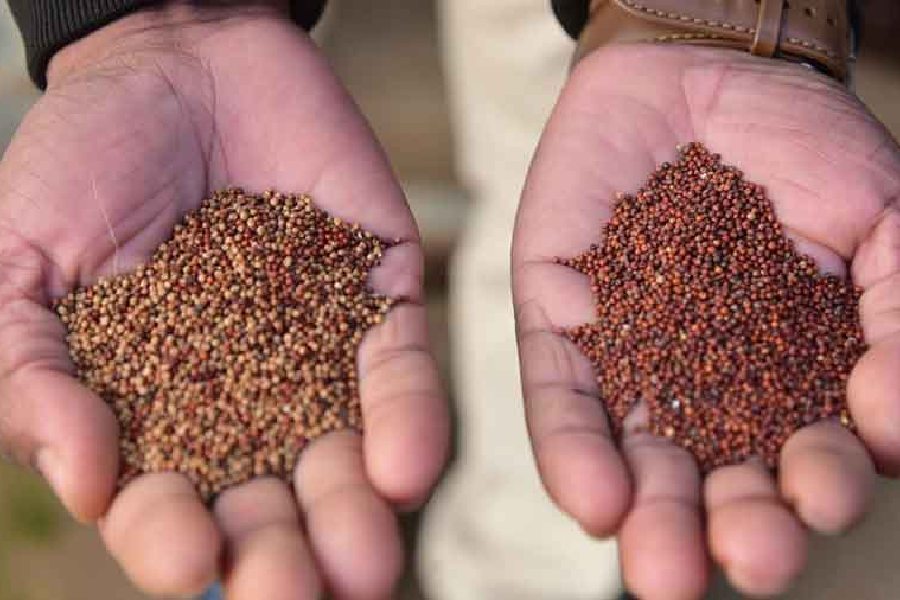A survey on millet cultivation in three districts of Jharkhand’s Santhal Pargana region revealed the challenges faced by marginal farmers during the production and sale of the crop.
The survey was conducted by an NGO, SwitchOn Foundation, in association with Empowering Energy-Water-Agriculture nexus (a network of NGOs) among 488 farmers in three districts of Dumka, Pakur and Sahibganj in Santhal Pargana region between September 2022 and March 2023.
“The survey report highlights intricate challenges faced by marginal farmers of Jharkhand which comprise low income level, low landholding size, high agricultural input cost, lack of reliable irrigation facilities, and lack of smooth access to market centres,” said a spokesperson of the NGO.
It assumes significance with the government of India proposing to the United Nations for declaring 2023 as the International Year of Millets to create domestic and global demand and to provide nutritional food to the people. The United Nations General Assembly in 2021 declared 2023 as the International Year of Millets.
“The study revealed that 66 per cent of the farmers grow at least one of the prime millets and 34 per cent of the farmers are not into growing either of the prime millets. It was found that 88 per cent of farmers reported knowing about the low water requirement of millets. The study revealed that the frequency of millet consumption was 90-99 per cent in Pakur and Sahibganj and 62 per cent in Dumka,” said the spokesperson.
He added: “In all, 98 per cent of farmers felt that the government subsidy would be a positive step towards providing support to marginal farmers.”
According to the NGO spokesperson, the reason behind selecting these districts as the study area is their agro-climatic zone and these are the only districts in the plains where millets are being cultivated at a large scale.
“In terms of cultivable land for millets, it was observed that almost 50 per cent of farmers are growing millets on more than three acres of land and only 1 per cent are growing it in less than an acre. This leads us to the fact that half of the farmers cultivating millets are small and marginal and the rest half fall into the category of semi-medium farmers,” said the spokesperson.
Nearly half of the farmers interviewed were observed to be earning between Rs 1,000 and Rs 3,000 as their monthly income from agricultural activities which puts them in the category of low economic groups, the survey points out.
“Interestingly, 32.2 per cent of farmers consume millets on Magi Puja whereas 30 per cent on Fasal Parv and only 0.6 per cent on Pahari Puja which are local cultural events,” the survey states.
“This shows that farmers in the selected districts are not completely disconnected from millet cultivation and still consume it as part of their culture or grow them to either include it in their diets or sell in the markets on a small scale,” said managing director of SwitchOn Foundation, Vinay Jaju.











